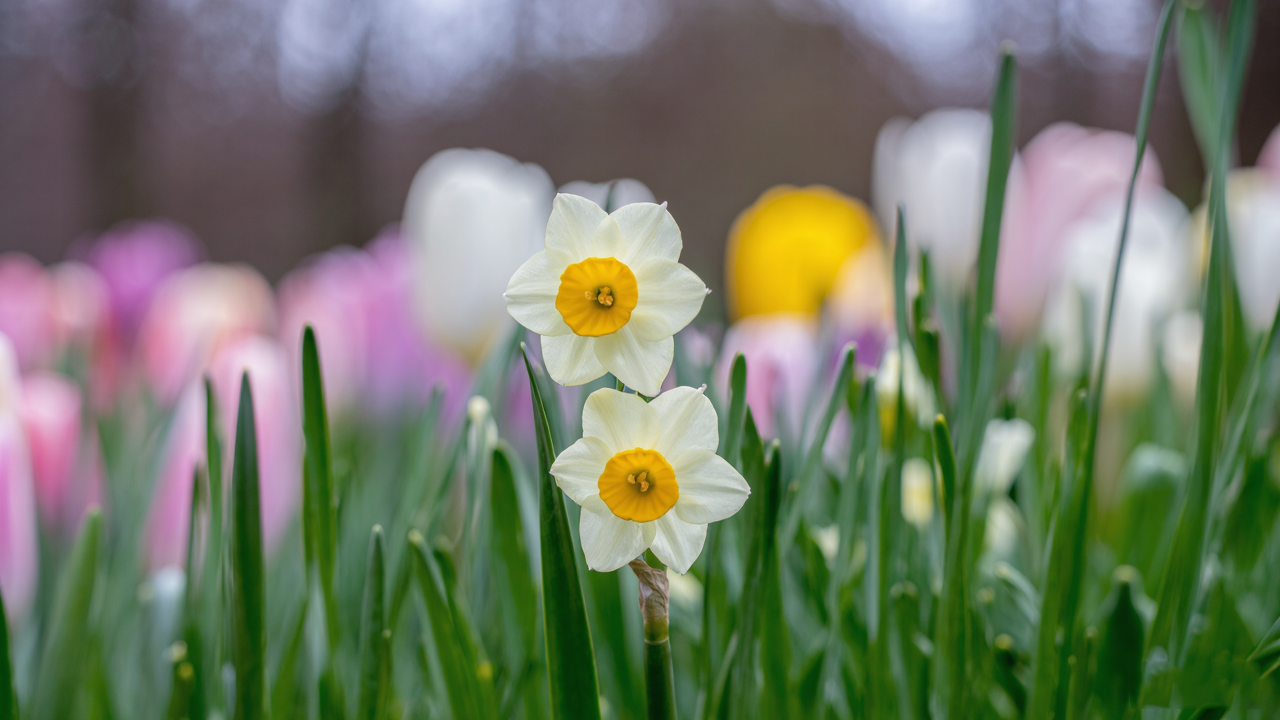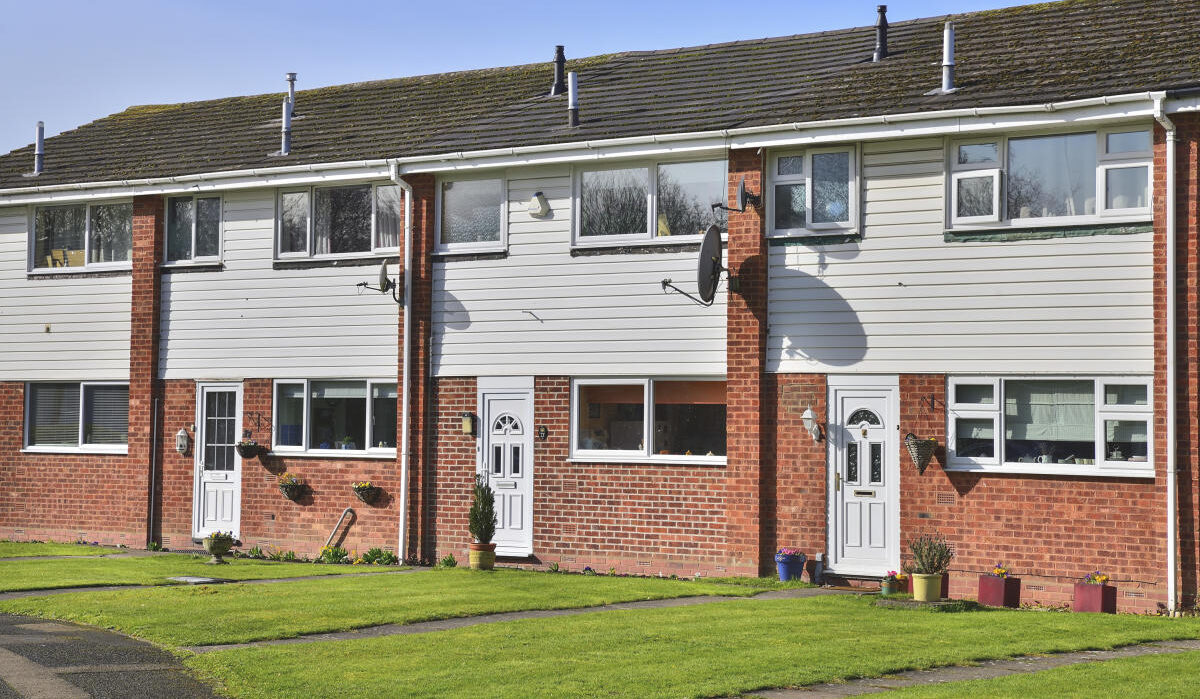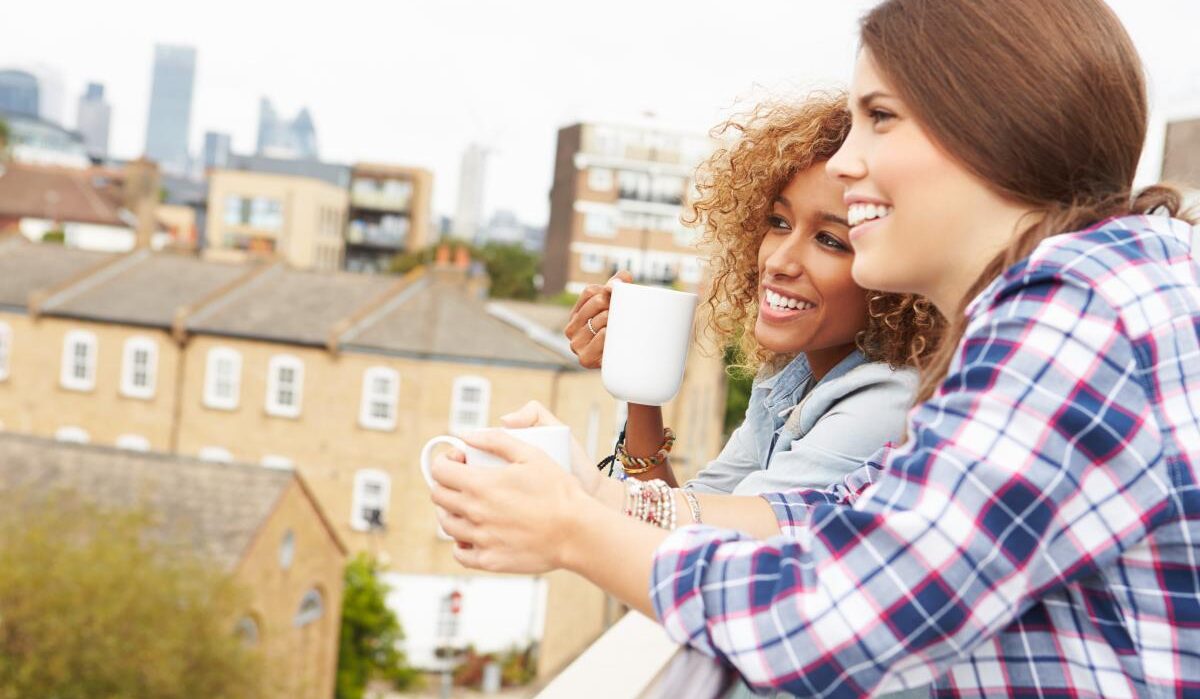London events in March 2025
Uncover London's vibrant March 2025 with our curated list of must-see events, from lively festivals to insightful workshops and captivating exhibitions.
Spring's whisper arrives in London. Light returns, flowers bloom, and the city pulses with life. March is here! Step out of winter's shadows. Explore parks, savor flavors, and immerse yourself in culture. Celebrations mark the month: festive holidays and cultural events. Film buffs find paradise in numerous film festivals. Art, literature, and music thrive. Your guide to London's vibrant March awaits.
1. See spring flowers blooming around the capital

Spring in London is always a knockout. We might live in a sprawling capital city, but that doesn’t mean there aren’t tons of amazing green spaces to enjoy the season’s pops of colour. From London's bright pink cherry blossoms to seas of daffodils, take a look at our list of the best places to see flowers in London
2. Celebrate the matriarchs in your life on Mother’s Day in London

Mums deserve high praise all year round, but Mothering Sunday is the ultimate excuse to treat your darling ma and any other matriarchs in your life to a lovely time. Here’s our guide to help you get organised and plan a proper celebration of mumsy on Sunday March 10, whether you want to take her for a cheeky Mumtini, treat her to a relaxing trip to one of London’s exquisite spas, or send her a stunning bunch of flowers.
3. Explore Ancient Egypt at ‘Tutankhamun: The Immersive Exhibition’

Promising ‘cutting-edge technology with rich historical narratives’, this Ancient Egypt-themed show is the latest experience to arrive at the ImmerseLDN, the ExCeL’s sprawling, 26,909 sq ft space for staging all things ‘immersive’. Tutankhamun: The Immersive Exhibition has apparently been viewed by 1.8 million visitors on a global tour, and arrives in London for 14 weeks this spring. Using splashy technology and 8-metre-tall projections, the exhibit will be divided into six galleries, each bringing the maximum amount of razzle dazzle to bear on the time of the Pharaohs. You’ll be able to experience such thrills as an immersive movie about the discovery of the tomb, a VR experience taking you ‘into the Egyptian afterlife’ and an AR walk through the Valley of Kings. Gimmicky it might sound, but it’s been endorsed by both the History Channel and the Grand Egyptian Museum in Cairo, so we’d imagine it will at the very least nail the historical accuracy. Got a kid that’s going through an Ancient Egypt phase? They’ll probably love it.
4. See the prettiest looking cats around at the London Catstravaganza

Ever looked at Crufts and thought, ‘this would be so much better with cats’? Well, taking place over two days, Catstravaganza is a celebration of fluffy and fabulous pussycats, with prizes given for the prettiest cats and kittens, as well as a razzle-dazzle ‘best in show’ presentation on the Copperbox Arena catwalk, and the chance to look at (and maybe stroke) some seriously stunning mogs.
5. Pick up some bargain pieces for your boring walls at The Other Art Fair

Your landlord might disagree, but there really is no excuse for boring white walls. Pick up original work from local artists to brighten up your bedroom for as little as £100 at this accessible alternative to (the many) stuffier and more expensive fairs on the London art circuit. Over 150 independent artists will be exhibiting work at the annual event presented by Saatchi Art, and there’ll also be immersive installations, performances, DJs, a fully stocked bar to entertain you. Think of it as art served with a side of party.
Good News for Borrowers? Base Rate Cut to 4.5% Explained
How the 4.5% base rate could shape the property market and your mortgage.
The Bank of England has cut the base rate by 0.25% and it now stands at 4.5%.
The Bank's Monetary Policy Committee (MPC) voted by a majority of 7–2 to reduce the base rate by 0.25%, to 4.5%. Two members preferred to cut the rate by 0.5%, to 4.25%.
The MPC last met in December, when it voted by 6-3 to hold the base rate at 4.75%.
The base rate, also known as the 'bank rate' or the 'interest rate', is important because it influences the rates that lenders charge their borrowers for things like mortgages.
Why has the base rate been cut?
The Bank has been using the base rate as a way of taming inflation, which hit a recent peak of 11.1% in October 2022.
The Bank increased the base rate from 0.1% in late 2021, to 5.25% in August 2023. It then cut the rate twice last year, first in August and then again in November.
The good news is that inflation has recently dropped. The Consumer Prices Index (CPI), a key measure of inflation, stood at 2.5% in the year to December. While that’s still above the Bank’s 2% target, it’s edged down from 2.6% in the year to November. It’s the first decline in three months.
In its Monetary Policy Report today, the Bank said that inflation is “following a bumpy path”.
It explained: “We expect inflation to rise temporarily this year, to 3.7%, including because of higher energy prices. Inflation is expected to fall back again to the 2% target after that.
“We need to be confident that inflation will remain low and stable in a lasting way. The Monetary Policy Committee will decide carefully by how much and when it can cut interest rates.”
The report also warned that the economy “may not evolve as expected, including because there could be global shocks. For example, global trade tariffs or developments in the Middle East could impact some prices”.
Andrew Bailey, the Bank’s governor, took a cautious tone when the MPC held the base rate in December: “We think a gradual approach to future interest rate cuts remains right, but with the heightened uncertainty in the economy we can’t commit to when or by how much we will cut rates in the coming year,” he said at the time
What does the base rate cut mean for mortgage rates?
Borrowers with mortgages that track the base rate are set to see an almost immediate impact on their mortgage rates. Meanwhile borrowers on fixed-rate deals that expire soon are likely to see the lower base rate factored into new deals.
Richard Donnell, Executive Director of Zoopla, said: “Today’s cut to the base rate will provide a boost to market sentiment for home buyers, more than a boost to buying power.
“The path of base rates is already priced into fixed-rate mortgages, which account for the majority of new mortgages.
“It’s positive that 2025 is starting with lower mortgage rates than the last two years. The average five-year fixed rate at 75% LTV is 4.4% while a two-year fix is at 4.6% (according to Bank of England data).”
Hina Bhudia, partner, Knight Frank Finance, reacting to the Bank's Money & Credit data on 30 January, said that mortgage rates have been largely steady during the early weeks of the year - though a handful of lenders did reprice a little higher during recent bond market volatility.
“That volatility has since eased and we do expect lenders to cut mortgage rates as soon as they are able to do so. They have fresh lending targets at the beginning of the year and are eager to build market share,” explained Bhudia.
“If the Bank of England does opt to cut the base rate as many as five times this year, as Morgan Stanley analysts predicted this week, borrowers shouldn't be waiting long for a reprieve.”
In the past week, Barclays, Coventry Building Society, Yorkshire Building Society, Santander, TSB and Co-op have all cut mortgage rates, according to The Sun.
How could this impact the housing market more broadly?
Our latest House Price Index shows that the 2025 sales market has started off better than both 2024 and 2023. This bodes well for market activity throughout the rest of the year.
And today’s base rate decision has the potential to boost confidence and improve affordability, paving the way for more moves across the housing market.
“Greater stability in borrowing costs has brought more buyers and sellers back into the housing market having delayed moving decisions as rates spiked higher. The latest Zoopla data (to Sunday 4th February) shows a healthy supply of homes for sale and home buyer demand 9% higher than a year ago, with 11% more sales agreed,” explained Donnell.
“We expect average mortgage rates to remain in the 4-5% range over the year ahead. Lower base rates will support the wider economy which in turn, will support housing market activity where we expect 5% more housing sales over the year to 1.15m and average house price growth of 2.5%.”
Donnell added that the average mortgage rate for all outstanding mortgages has risen and now stands at 3.8% as borrowers refinance mortgages.
“The last of the ultra-low rate five-year fixes taken in 2021 will be refinancing in the next 18 months as the whole housing market sees mortgage rates resetting to current levels,” Donnell said.
Key takeaways
- The Bank of England has cut the base rate by 0.25%. It now stands at 4.5%
- The Bank's Monetary Policy Committee (MPC) voted by a majority of 7–2 to reduce the base rate by 0.25%, to 4.5%.
- The base rate, also known as the 'bank rate’ or the ‘interest rate’, influences the rates that lenders charge their borrowers
- Today’s decision comes after UK inflation fell to 2.5% in December. It was the first drop in the rate of inflation for three months
Smart Ways to Afford a New-Build Home
Did you know buying a new-build home can be more budget-friendly than an older property?
If you’re looking to move this year, you may have started to weigh up whether to buy a new-build home or an older property. There are many contributing factors to this decision, but a big one is affordability. And when it comes down to it, new builds win by a long way.
So let’s take a deeper look at this. What makes new builds the affordable option? And how can you make the most of your budget when buying a new home?
Buying schemes for first-time buyers and home movers
One of the biggest perks of new-build homes is the number of schemes and incentives available to buyers. For both first-time buyers and home movers, these initiatives can make all the difference when it comes to saving cash.
Some schemes you can take advantage of are:
-
Deposit Unlock: Buy a new home with a 5% deposit and dramatically reduce your upfront costs. This scheme is available to first-time buyers and home movers.
-
Own New - Rate Reducer: An initiative that can give you access to lower mortgage rates. It’s a regular mortgage that uses a developer incentive to lower monthly payments for the initial period. (This period depends on how much you earn and which lender you are matched with.) Rate Reducer enables you to access mortgage rates below 2.88%*, which could mean a potential saving of up to £304 on monthly repayments**. This scheme is available to first-time buyers and home movers.
-
Shared Ownership: Purchase a percentage of the property (typically between 25% and 75%) and pay rent on the remainder, making homeownership achievable on a smaller budget. This scheme is only available to first-time buyers.
-
Deposit contributions: Some developers will top up your deposit to help reduce the upfront cost of buying your home. This added support not only accelerates your home-buying journey but can also make you eligible for more competitive mortgage rates by increasing your deposit size. This is available to first-time buyers and home movers
-
Part exchange: If you own a home already, many house builders offer part exchange. This is where the developer purchases your existing property directly, allowing you to focus on securing your new home. With part exchange, the developer covers the cost of estate agent fees and acts as a guaranteed buyer for your current property, saving you the hassle of selling on the open market.
-
Assisted moving schemes: Through schemes like Easy Move, developers work with local estate agents to market and manage the sale of your existing home—and they’ll cover the costs.
Aside from Shared Ownership, these schemes are exclusive to new-build homes.
To find out about which buying schemes are available at developments near you, check the description of the property or development on Zoopla, contact the developer directly, or seek advice from a specialist new-build broker.
Green mortgages and utility bill savings
New homes are built to increasingly higher standards and regulations to ensure improved energy performance and reduced water usage. This means that as well as benefitting from new technology and building practices, you’ll also get a few financial perks.
Green mortgages reward you for living in an energy-efficient home. If the property you're buying or living in has an EPC rating of A or B, you'll get cashback or a better interest rate on your mortgage. With 86% of new builds earning an A or B EPC rating, new homes are very likely to qualify.
Speak to a mortgage broker for more details on green mortgages and whether you could get a better rate.
The improved energy efficiency of today’s new-build homes also means you could save £979 a year on your heating, hot water and lighting costs on average.** That’s a potential saving of £82 a month.
Another sustainable benefit of new homes that’s often overlooked is the built-in water efficiency. The average new build homeowner uses 40 litres less (per person per day) than owners of older properties. Less water used = a cheaper water bill!
With savings to both your water and energy bills, a new home can really help to lower your monthly outgoings.
Fewer unexpected financial surprises
With a new-build home, everything is brand new—from the boiler to the roof. This means you’re far less likely to face unexpected repairs or replacements. And any defects you do come across will be covered by the developer’s multi-year warranties.
With the time you and effort you save avoiding renovation work, you can focus on settling in and making it your own from day one.
Compare that to an older property, where you could quickly find yourself budgeting for a new boiler or kitchen renovation when you uncover its horrible hidden history. Research has even shown it could cost more than £70k to bring an old home up to the modern standards found in new-build homes.
Over time, these savings add up. While an older home might seem cheaper at first glance, the ongoing costs of maintenance, renovation work and running costs can make it more expensive in the long run.
Why buy new?
While every buyer’s situation is different, there are a number of reasons new homes can actually be a more affordable option than purchasing an existing property. With financial incentives, lower running costs, and no unexpected repairs to pay out for, they can save you money upfront and in the long term. Add in the peace of mind that comes with warranties and guarantees, it’s clear why so many buyers are turning to the new build market.
*Example assumes a 3% homebuilder incentive and is based on mortgage rates available in the market, with a 2 year initial period and an LTV of 75%. Savings made in the initial fixed period only and mortgage repayments may increase thereafter. Independent financial advice must be sought from a regulated mortgage broker to access this scheme. This example should be used as a guide only and does not represent the suitability, eligibility or availability of mortgage offers for users. For exact figures, users will need to approach an official mortgage lender. Your home may be repossessed if you do not keep up your mortgage repayments. Rates valid as of 14-01-2025
**Example based on market interest rates, with an average house price of £360,000 and an average mortgage term of 35 years. Assumes a 3% homebuilder incentive and a 2 year fix, with 75% LTV mortgage. Independent financial advice must be sought from a regulated mortgage broker to access this scheme. This example should be used as a guide only and does not represent the suitability, eligibility or availability of mortgage offers for users. For exact figures, users will need to approach an official mortgage lender. Your home may be repossessed if you do not keep up your mortgage repayments. Rates valid as of 14-01-2025
Key takeaways
- You can access buying schemes with new builds to save you money and help you buy
- You can get a green mortgage and save on utility bills by living in an energy-efficient new build
- You don’t have to worry about maintenance costs with a new build
Why new-build homes offer so much more : Building better
A deep dive into why new homes are built to a much higher standard compared to older homes.
There’s no doubt that when it comes to buying a home, the structure of the property and its build quality can come out at the top of people’s considerations.
For some, a quality build means an older property. But with ever-evolving modern techniques, standards and innovations in construction, the build quality of brand new homes can come out as far superior to those built decades or centuries ago.
From improved sustainability to designs focused on modern-day living, new homes are testament to how much the home-building industry has improved to meet the needs of today’s buyers. Let’s take a deeper look.
Modern techniques
Older homes were often built with features that fall short of modern standards. But today, new homes have traded in single-pane windows and poor insulation for double or triple glazing and energy efficient heat-trapping materials.
Modern Methods of Construction (MMC) incorporate off-site manufacturing techniques, where components such as walls, floors or entire units are manufactured in a factory and then transported to the site for assembly. MMC aims to reduce construction time, increase sustainability and ensure higher consistency in quality compared to traditional construction methods.
Consumer protections
Significant strides have also been made in consumer protections for new-build homes. With initiatives like the New Homes Quality Board (NHQB) and the New Homes Ombudsman Service (NHOS), buyers now enjoy unprecedented support and transparency during the buying process. Builders are required to meet strict quality standards, and the consumer codes in place mean that they must deal with any issue raised by a customer quickly and fairly. If they don’t, the customer has the right to access an independent ombudsman service. This setup is currently voluntary but now covers the majority of new homes sold each year. It ensures that buyers can make informed decisions with confidence, knowing they’re protected every step of the way.
Customer satisfaction
Customer satisfaction levels for new-build homes are at an all-time high. According to the latest National New Homes Customer Satisfaction Survey, over 90% of new home buyers say they’d recommend their builder to a friend. This reflects the efforts made by the house-building industry to improve quality and service.
Recommendations from the Competition and Markets Authority (CMA) are also increasing transparency and raising the bar for quality across the sector.
Energy efficiency
Modern homes also deliver on efficiency where older properties often fall short. New-build homes are incredibly energy efficient, emitting 65% less carbon than older properties—just 1.22 tonnes annually compared to 3.51 tonnes for older homes. With 86% of new builds earning an A or B EPC rating, compared to under 5% of older homes, they offer significant savings on energy bills. The average energy and water costs for new-build houses is 50% cheaper, resulting in a potential saving of £979 a year.
Sustainability
The focus on quality and sustainability is particularly important as the demand for housing grows. The CMA’s recent house-building market study highlighted the persistent challenges posed by the planning system, which has long hindered the delivery of new homes. While planning reform remains a pressing issue, the housing industry continues to adapt and innovate despite these obstacles. Builders have proven resilient, meeting the evolving needs of buyers while navigating a complex regulatory landscape.
Ultimately, today’s homes are more efficient, and more consumer-friendly than ever before. Modern construction techniques ensure that homes are built to last, while advancements in materials and technology enhance their performance and sustainability.
Key takeaways
- New homes are built with modern techniques and more energy efficient materials than older homes
- Consumer protections are in place meaning builders are required to meet strict quality and transparency standards
- Over 90% of new home buyers say they’d recommend their builder to a friend
- The average energy and water costs for new-build houses is 50% cheaper than older homes, resulting in a potential saving of £979 a year
UK house prices rebound in 2024, with half of all homes experiencing a £7,600 increase
The average UK home has appreciated by £2,400 in the last six months. However, this figure may not accurately reflect the substantial gains experienced by terraced properties in the northern regions.
Half of the UK’s 30 million homes increased in value in 2024.
House prices returned to growth following price falls in 2023, due to weakened buyer demand as a result of higher borrowing costs.
15 million homes increased in value by one per cent or more last year, up 42 per cent from the 10.6 million homes that increased in value over 2023.
The average increase in value for homes posting price gains was £7,600, with 6.9 million homes recording a price increase of £10,000 or more.
While 2024 saw a broad recovery of house prices, a third (9.2 million homes) still recorded a price decline of one per cent or more.
However, this is less than the number of homes that saw a decline in 2023: 12.8 million.
Just under six million homes saw broadly static prices over the year changing by +/- one per cent.
Half of homes in Great Britain increased in value in 2024

Home value gains lower in Southern England
A clear north-south divide remains when it comes to the fortunes of homeowners in 2024, with fewer homes in southern England recording an increase compared to the rest of Britain.
This reflects the underlying affordability of homes: higher mortgage rates affect buying power and house prices more in areas where home values are above average.
Just a third (36 per cent) of homes increased in value by one per cent or more across southern England. And two-fifths (41 per cent) of homes fell in value by an average of £8,700.
This is in sharp contrast to the northern regions of England and Scotland, where 63 per cent of homes registered value gains over 2024.
Coastal towns in Kent and East Sussex were least likely to register price gains in 2024. Many saw less than ten per cent of homes increase in value, while more than three-quarters of homes registered small price falls.
This is due to the fading of the pandemic boom and the subsequent search for additional space as more workers return to the office.
An additional factor is the increase in second homeowners selling in the face of a doubling in council tax from April, which is impacting pricing across many coastal towns.
Average value change by region
|
Region/ Country |
Avg. value change over 2024 |
% of homes with value increase of 1% or more |
No. of homes with value increase of 1% or more |
% of homes with value decrease of 1% or more |
No. of homes with value decrease of 1% or more |
|
North West |
£4,400 |
63% |
2,090,000 |
21% |
710,000 |
|
North East |
£4,300 |
68% |
820,000 |
19% |
230,000 |
|
West Midlands |
£3,900 |
59% |
1,480,000 |
22% |
560,000 |
|
Yorkshire & Humberside |
£3,700 |
61% |
1,500,000 |
23% |
570,000 |
|
Scotland |
£3,200 |
61% |
1,580,000 |
24% |
640,000 |
|
Wales |
£2,300 |
52% |
760,000 |
29% |
420,000 |
|
East Midlands |
£1,700 |
48% |
1,010,000 |
31% |
660,000 |
|
London |
£600 |
40% |
1,510,000 |
37% |
1,430,000 |
|
South West |
-£300 |
37% |
970,000 |
40% |
1,040,000 |
|
South East |
-£900 |
35% |
1,390,000 |
41% |
1,620,000 |
|
East of England |
-£1,300 |
33% |
880,000 |
43% |
1,150,000 |
Lower mortgage rates and rising incomes over 2024 have started to repair housing affordability.
More homes in Southern England increase in value over 2024 compared to 2023, from 2.8 million in 2023 to 4.8 million in 2024.
Areas in Wiltshire, Gloucestershire and Oxfordshire saw half of all homes register price gains over 2024. Additionally, Berkhamsted in Hertfordshire saw the largest national average annual price increase at £24,500.
House value increases most common in Northern England
Housing is more affordable outside of Southern England, where house prices are lower in comparison to incomes.
Lower house prices create more headroom for values to increase, despite higher borrowing costs. And more than three in five homes increased in value over 2024 across Northern England and Scotland
The North East is one of the most affordable regions and, as a result, seven in ten homeowners (820,000) in the region saw the value of their home increase by an average of £4,300.
One in five (270,000) homeowners saw house price growth of £10,000 or more.
Peterlee in County Durham saw the highest proportion of properties registering higher home values, with 83 per cent registering an increase by an average of £6,100.
The North West saw 63 per cent of homes increasing in value by one per cent or more, averaging £4,400, the highest average gain across all regions and countries of Great Britain.
The Cheshire area registered the largest value gains, with six in ten homes in Congleton and Knutsford increasing in value by £10,000 or more.
In Scotland and Yorkshire and the Humber, six in ten homes also gained value in 2024, with average increases of up to £19,300 (Biggar in Scotland), and £15,700 (Ripon in Yorkshire and the Humber).
Towns with the highest percentage of homes increasing in value in 2024
|
Region/ Country |
Town |
% homes with value increase of 1%+ |
No. of homes going up in value |
Avg. value change (£) |
|
East Midlands |
Glossop |
67% |
10,700 |
£7,000 |
|
East of England |
Berkhamsted |
53% |
5,900 |
£24,500 |
|
London |
Waltham Forest |
64% |
74,800 |
£8,700 |
|
North East |
Peterlee |
83% |
14,500 |
£6,100 |
|
North West |
Blackburn |
77% |
48,700 |
£8,100 |
|
Scotland |
Carluke |
82% |
7,800 |
£8,900 |
|
South East |
Thame |
56% |
4,100 |
£5,600 |
|
South West |
Portland |
54% |
3,700 |
£2,900 |
|
Wales |
Ferndale |
74% |
4,500 |
£3,900 |
|
West Midlands |
Wednesbury |
79% |
16,600 |
£6,000 |
|
Yorkshire and Humber |
Normanton |
81% |
8,700 |
£7,500 |
Towns with the highest percentage of homes decreasing in value in 2024
|
Region/ Country |
Town |
% homes with value decrease of 1%+ |
No. of homes falling in value |
Avg. value change (£) |
|
East Midlands |
Corby |
74% |
24,700 |
-£6,000 |
|
East of England |
Bungay |
79% |
4,400 |
-£8,400 |
|
London |
Kensington and Chelsea |
72% |
73,200 |
-£44,300 |
|
North East |
Houghton Le Spring |
48% |
13,100 |
£3,800 |
|
North West |
Cheadle |
54% |
14,100 |
-£2,000 |
|
Scotland |
Inverurie |
65% |
11,100 |
-£4,200 |
|
South East |
Broadstairs |
89% |
11,800 |
-£15,300 |
|
South West |
Ferndown |
83% |
11,500 |
-£14,400 |
|
Wales |
Pwllheli |
64% |
6,800 |
-£3,650 |
|
West Midlands |
Evesham |
45% |
10,000 |
£900 |
|
Yorkshire and Humber |
Beverley |
57% |
12,800 |
-£5,100 |
Our Executive Director Richard Donnell says: "The housing market returned to growth in 2024 but the pattern of home value changes across Britain is far from uniform. There is headroom for prices to increase in markets where housing is affordable compared to incomes, which covers many parts of northern England and Scotland.
"In contrast, affordability is more of a constraint on price rises in Southern England where the market continues to adjust to higher borrowing costs. Faster income growth is helping to repair affordability-supporting moving decisions in 2025.
“Every home has its own trajectory for price changes and millions of owners are tracking the value of their home on Zoopla as part of the decision of when to move home. The momentum from 2024 is spilling into 2025 with a seven-year high in the number of homes for sale.
"We expect more people to move home in 2025 than in 2024 despite uncertainty over the economic outlook and broadly static mortgage rates."
Key takeaways
- 15 million homes (that's half the UK's housing stock) gained £7,600 in value over 2024
- A third registered small value falls, mostly across Southern England, as higher mortgage rates reduced buying power
- The overall average price change for all 30m homes was a £2,400 increase
- Home values have been slower to recover in Southern England, with just over a third (36 per cent) of homeowners seeing home value gains in 2024
- Nearly two-thirds (62 per cent) of homes across Northern regions of England and Scotland saw home values increase
- Seven in ten homes gained value in the North East, but the average value increase over the year was highest in the North West at £4,400
Things to do in London January 2025
January in London: Escape the post-holiday blues with budget-friendly theater, delicious deals, and vibrant cultural events like Burns Night and Lunar New Year celebrations. 🎭🎉
Find your perfect January in the city, whether it's fitness, cozy pubs, or exploring hidden gems.
1. Be dazzled by the Canary Wharf Winter Lights

The bright lights of Canary Wharf's towers are quite the spectacle after dark, but the business district will glow brighter than usual in January thanks to the addition of sparkling illuminations created by artists from around the world. The Winter Lights festival returns for its ninth edition with a new set of dazzling artworks, installations and interactive experiences, plus some old favourites from previous years.
There’ll be 11 immersive illuminations dotted across the area, including some intriguing sounding sculptures like a ‘towering stack of bathtubs pulsing with light and sound’, an orbiting pylon emitting a ‘tornado’ of light, luminous saris fabric, an iridescent mirage on Montgomery Square and a 20m-wide sink hole encircled by light. There’ll be sweet treats and hot drinks to warm you up between the installations.
2. See Lightroom transform into an otherworldly spectacle for just £19

Tom Hanks narrates an epic experience that offers a unique new perspective on humankind’s past and future voyages to the moon. See this exciting Apollo Remastered collaboration with Tom Hanks, Christopher Riley and 59 Productions with an insight into the impending return of crewed surface missions by going behind the scenes of the Artemis programme, including interviews between Hanks and Artemis astronauts. With a musical score by Anne Nikitin, Lightroom’s powerful projection and audio technology will transport you to another world.
3. Rethink your relationship with art at the London Art Fair

London’s established winter art fair opens with over 120 galleries showing modern art, photography, sculpture and everything in between. This year’s London Art Fair will feature large-scale installations and thematic group displays from some very influential artists, including Tracey Emin and Francis Bacon. A new partnership with the Sainsbury Centre will also introduce an immersive 'Living Art' experience, which hopes to encourage visitors to rethink their relationship with art.
4. Head out of the city on a winter day trip

London might always be bustling with fun things to do and, come winter, a jam-packed calendar of unmissable events, but sometimes you just need a break from it all. When the capital’s hustle and bustle leaves you feeling a little drained, you can find some escape from the crowds and hordes of tourists by getting up and getting out just for a day. In dire need of crisp country air, a relaxing spa day or a gorgeous, long walk? These day trips from London are all under two hours from Zone 1 and will give you the relief you need this winter.
5. Try some of the best mocktails in London

In a city brimming with bars, breweries and prosecco-based pop-ups, it would seem that drinking in London without actually, erm, drinking is an impossibility. Leave your beer goggles at home for one night, however, and you’ll see the selection of non-alcoholic cocktails and booze-less blends available in the capital is pretty extensive. In some venues, the alcohol-free offerings are even more creative and tastebud-seducing than their liquor-rich counterparts. Don’t believe us? Have a sip on one of these teetotal tipples...
6. Exclusive £23 deal: Three courses and wine at 100 Wardour Street

100 Wardour Street is your go-to spot for an after-work unwind, offering a perfect mix of dining, drinks, and dancing. Dive into a vibrant atmosphere of neon lights and chic interiors while savouring a three-course meal with modern European classics. Enjoy starters like Burrata with Datterino tomatoes and Korean Fried Chicken, followed by mains such as Baked Cod with sundried tomatoes or Josper Grilled Spatchcock Chicken. Wrap up your meal with desserts like Baba Mignon or Medjool Date & Dark Chocolate Mousse. Plus, with a complimentary glass of wine included, this is an offer you won’t want to miss!
7. Dig deep into the world of soil at ‘SOIL: The World At Our Feet’

Soil – it’s not something you really think about, unless you’re doing the gardening. But this new exhibition at Somerset House will change all that, shining a light on its important role in our world, including the part it plays in our planet’s future. Top artists, writers and scientists from across the globe are all involved in the thought-provoking exploration, which aims to stop you thinking of soil as mere dirt and start considering it as something far more powerful instead.
8. Take a bracing winter walk in London

Yes, it's cold out. It's also quite wet. The leaves have fallen from the trees and turned the pavements into a slimy, slippery ice rink. But we're lucky to have some amazing, huge, parks in London, and walking around in them on a crisp winter's day is genuinely one of life’s great joys. Whether you're a Royal Parks stan or a fiend for Hampstead Heath, there are loads of parks to choose from. So, get out there.
9. Enjoy a sherry-fuelled feast at Isaac McHale’s new restaurant

Isaac McHale is already responsible for one of Shoreditch’s most renowned restaurants with the two Michelin-starred The Clove Club, so we expect big things from the Scottish chef’s next project, a ‘considered yet informal’ à la carte spot inspired by his love of southern French and simple Spanish cooking, which opens round the corner on Kingsland Road in January. Bar Valette’s menu promises an array of bar snacks inspired by San Sebastian’s pintxos bars, plenty of hearty sharing dishes suitable for long, boozy dinners with friends, and one or two Clove Club signatures. It’ll also offer an extensive list of French and Spanish wines, plus craft ciders and rare bottles of sherry. You need only look at the perpetual queue outside Tollington’s to see how eagerly London has embraced Iberian bar culture of late, so we’d imagine the latest opening to service this trend will be popular from the get-go.
Bank of England holds the base rate at 4.75%
The Bank of England has held the base rate at 4.75%, with 6 members voting to hold the rate and 3 voting to reduce it.
The Bank of England has held the base rate at 4.75%, with six members of Bank's Monetary Policy Committee voting to hold the rate and three voting to reduce it.
The rate of inflation has risen recently, to 2.6% in November, above the bank's 2% target.
The bank's Monetary Policy Committee (MPC) said rising geopolitical tensions, the election of Trump and trade uncertainty, alongside the government's recent £40bn tax-raising budget, mean that growth is faltering, while inflation risks remain.
Three members of the nine-strong panel – the deputy governor, Dave Ramsden, and economists Swati Dhingra and Alan Taylor – preferred a 0.25% reduction in borrowing costs.
However, Andrew Bailey, the Bank’s governor, was cautious as to when the Bank might be able to announce future cuts: “We think a gradual approach to future interest rate cuts remains right, but with the heightened uncertainty in the economy we can’t commit to when or by how much we will cut rates in the coming year,” he said.
Trump's victory could have an impact on prices globally because he plans to introduce tariffs on imports, which some economists estimate could cost the UK billiions.
Meanwhile, UK retailers have also implied prices could rise while jobs could be at risk after the Chancellor, Rachel Reeves, announced a rise in Employer's National Insurance contributions in her autumn statement.
What does this mean for mortgage rates?
The base rate influences the interest rates that many lenders charge for mortgages, loans and other types of credit they offer people.
It has been cut twice in 2024, firstly in August and latterly in November.
Mortgage rates are currently sitting between 4% to 4.5% for 2- and 5-year fixes.
According to mortgage broker Mojo, which is part of the Zoopla family, the average 2-year fixed rate deal is currently 4.46% for a 60% LTV mortgage, while the average 5-year fix for the same LTV is 4.27%.
Some economists are predicting that a 6-3 split among the committee makes a future cut in interest rates more likely, when the MPC meets again in February.
However others are exercising caution, as the Bank watches how companies respond to Reeves's Autumn Statement.
Key takeaways
- The Bank of England has voted by 6-3 to hold the Base Rate at 4.75%
- However in a statement, the Bank's Monetary Policy Committee says it plans a series of gradual cuts in the future
- The base rate, also known as the 'bank rate’ or the ‘interest rate’, affects the rates that lenders charge their borrowers
Homeowners live in homes for 9 years before upping sticks
Londoners stay put the longest before going on the market, while those in the North up sticks faster. Find out what's happening where you live.
UK homeowners are staying put in their homes for an average of 9 years before moving out.
In the last 18 months, 33% of homes were re-sold after their owners had lived in them for between 3 to 7 years.
The tripling of mortgage rates, fire safety issues and pandemic lifestyle changes, alongside personal reasons, are the key motivating factors behind people upping sticks to somewhere new.
Over half of sellers move within ten years

When looking at the distribution of time between moves, we find two peaks in activity, involving sellers who bought between 2005-7, and sellers who bought 3-6 years ago.
The first bump in sales activity comes from people who bought their home just before the Global Financial Crisis back in 2007.
This trend is more distinct in northern England, where house prices took longer to recover from the crisis. It took until 2017 for these homes to reach their pre-crisis price levels.
Since then, the equity gains homeowners have made has helped them to unlock their next move.
The more recent peak coincides with purchases following the Brexit referendum, as well as during the Covid pandemic.
Home moving decisions since then have been influenced by pandemic-driven re-assessment of home needs, fire safety issues and affordability challenges triggered by tripling mortgage rates
Those in smaller homes move 4 years earlier on average
Homeowners in smaller homes with one or two bedrooms tend to outgrow them quickly and don’t typically stay as long in their homes (just 9 years versus 13 years for those in larger homes).
These property types are popular among singles and young families with fast-evolving home needs who are more likely to upsize earlier than more established families.
Average number of years between sales by property size and region
|
Region |
One & two bed |
Three Bed |
Four plus bed |
|
Scotland |
7 |
7 |
8 |
|
Wales |
8 |
8 |
9 |
|
East Midlands |
8 |
8 |
9 |
|
East of England |
8 |
9 |
10 |
|
London |
9 |
11 |
12 |
|
North East |
8 |
8 |
9 |
|
North West |
9 |
9 |
9 |
|
South East |
8 |
9 |
11 |
|
South West |
8 |
9 |
9 |
|
West Midlands |
8 |
8 |
10 |
|
Yorkshire and The Humber |
9 |
8 |
9 |
Those in more affordable regions are also more likely to move sooner.
This is evident in Scotland and the North East, two of the most affordable regions of the UK where homes cost on average £166,500 and £146,000.
Over a quarter (28 per cent) of homeowners in these regions are more likely to sell within just five years of purchasing their home.
While mortgage rate increases have had a less pronounced effect in more affordable regions, the overall cost of moving tends to be lower in these areas making the prospect of selling more attractive for would-be movers.
Sellers in more affordable areas sell earlier

Urbanites stay put for longer
Londoners who sold in the last 18 months stayed in their home for the longest compared to other UK regions, an average of 10 years.
This is most likely due to higher house prices and higher moving costs.
Stamp duty rates in the capital are higher than anywhere else in the country, costing the average Londoner £14,230. This goes up to 15 years in Barking and Dagenham - the largest average in the country.
Elsewhere in England, we find that homeowners in areas with small towns and villages like Mid Devon, Harborough and Swale sell after the shortest amount of time, just eight years on average.
In Scotland, those living in the main cities of Glasgow and Edinburgh, as well as larger towns in southern parts of Scotland move most often, on average every seven years.
Two cohorts of sellers have dominated the market over the last 18 months - those who bought just before the Global Financial Crisis and those who bought just before or during the pandemic.
Their decisions to move have been influenced not just by personal needs, but also equity gains, affordability and buying costs.
As the market continues to settle in 2025, those considering selling should get in touch with local agents to understand the value of their current home, what demand for a home like theirs looks like and what they can afford to buy.
Key takeaways
- There have been two bumper crops of sales in the last 18 months, largely from sellers who bought just before the Global Financial Crisis in 2007 and those who bought just before or during the pandemic 2019
- Homeowners in flats are selling quicker than those in houses, with apartments going back on the market after 9 years, while houses return after 13 years
- Sellers in more affordable areas such as Scotland and the North East are most likely to sell within five years of purchasing their home, with lower moving costs unlocking more moves in cheaper parts of the UK
- But Londoners stay put for the longest: most sellers in the capital who sold in the last 18 months had lived in their homes for 10 years
Things To Do in London December 2024
Discover the top activities, exciting events, and must-see attractions taking place across London this December 2024.
Can you hear those sleigh bells jingling? Maybe not just yet, but December is fast approaching, and London is gearing up for another season of festive cheer. Stroll beneath dazzling Christmas lights, soak in the sound of carols, and dive into the holiday spirit with a visit to Christmas markets or a cozy festive film screening.
But December isn’t all about Christmas! The city's cultural calendar is brimming with unmissable events. Highlights include a reimagined staging of Derek Jarman’s Blue, Sigourney Weaver’s much-anticipated UK stage debut in Jamie Lloyd’s production of The Tempest, a star-studded performance of Cat On A Hot Tin Roof at The Almeida, and the London debut of a celebrated musical adaptation of War and Peace.
While new museum and gallery openings are sparse this month, December offers a final chance to catch blockbuster exhibitions like Fragile Beauty at the V&A, Haegue Yang at the Hayward Gallery, and Geumhyung Jeong at the ICA before they close.
And, of course, London’s winter charm shines through with seasonal activities like ice skating, festive pop-ups, and invigorating winter walks topped off with a warm pub gathering.
Then there’s New Year’s Eve—the grand finale of the month, bringing unforgettable parties and celebrations to cap off the year in style.
December in London is nothing short of magical. Dive into our guide for everything you need to know about the events, shows, and activities lighting up the city this December 2024.
Skate at Somerset House

Somerset House’s iconic ice rink has become a Christmas tradition for Londoners and visitors heading to the capital for some festive cheer. There’s good reason – gliding (or, at least, attempting to) around the rink, gazing upon the Georgian architecture and 40ft Christmas tree feels like you’ve skated onto a movie set, ready to be watched by families settling in for their post-turkey food coma.
There’s more to this rink than just skating, though. This year, pop-up gourmet dining spot The Chalet and rosé brand Whispering Angel’s skate lounge will return to keep you fuelled up. Skate Lates are also back, with DJ takeovers from Rinse FM, Daytimers’ Rohan Rakhit, Dankie Sounds, and Jay Jay Revlon. Shelter Boutique are bringing a pop-up shop of pre-loved clothing, homewares and gifts for you to shop til you drop at, while there’ll also be special chilled-out sessions for those who want to skate but need things to be a little quieter, and coaching for skaters of all ages at the skate school and kids’ skate club.
Christmas lights in London

Even if you think Christmas is a load of consumerist claptrap, you can’t deny that London looks a whole lot better when it’s hung with strings of glistening lights. And London is never in short supply of some thoroughly excellent festive light displays. From the classic angels that beam over Regent’s Street to the snazzy, themed displays over Carnaby Street, a trip to one of these gleaming streets will flutter the heart of even the most Scrooge-like of souls.
Miracle

Dreaming of a kitsch Christmas? New York’s famous Miracle on Ninth Street bar is popping up in London for its seventh year, ‘50s Christmas decorations, nostalgic accessories and creative new spins on beloved cocktail favourites in tow. This year’s menu is still a work in progress, but past years have seen the bar slinging the likes of a Snowball Old Fashioned or a Christmapoliton, which includes cranberry sauce and absinthe mist – a take on Christmas trimmings that’s not for the faint-hearted. If you’re failing to find the Christmas spirit, this is one great place to come find it.
Club Curling

Curling has been growing in popularity in recent years, nudged on by its compelling showings at various Winter Olympics, and you can try your hand at it in King’s Cross this winter. This pop-up outdoor arena boasts six synthetic curling lanes, on which you can curl your heart out for 45 minutes before rewarding yourself with a tasty cocktail at the Curling Club bar. Last year’s 90s theme is being replaced by bright neons, with Walthamstow’s God’s Own Junkyard recreating their warehouse in the bar. Booking opens on October 11.
London’s best festive concerts

An evening of proper Christmas carols is an absolute must if you’re interested in getting entirely wrapped up in unalloyed festive cheer. Check out our comprehensive round-up of the jolliest and most moving services in the capital. Indoors and outdoors, cathedrals, churches and secular spaces, we’ll be adding to it constantly, as more events are announced.
London’s best Christmas markets

Markets, eh? They’re pretty nice to wander around at nearly every time of year. But, at Christmas? Well, that’s when London’s markets really come into their own. Every year the capital fills with the kind of markets that host fairy-light-lined stalls, festive street-food sellers and community tombolas, with a playlist of Christmas songs on loop in the background. In fact, whether you’re looking for tasty treats, traditional decorations and cutting-edge arts and crafts or are just shopping for a last-minute present, the capital’s selection of Yuletide stalls are here to help.
New Year’s Eve Cruise

Trying to find a good spot to watch the NYE fireworks along the Thames can be a hassle. You’ve got to get down early, jostle for space and then stay there til the big show is over. Uber Boat by Thames Clipper is offering a much less stressful and much more luxurious way to witness the spectacle this year, with special New Year’s Eve cruises. The package includes a sail down the river, a welcome glass of red or white wine or a soft drink when you board, plus a glass of Champers to toast with at midnight, live music and a yummy snack box to keep hunger at bay. The cruises set sail from various points of the river, including Tilbury, Gravesend, Barking, North Greenwich, Putney, Battersea Power Station and Canary Wharf.
New Year’s Eve Fireworks

Things to do on New Year’s Day in London

Congrats – you’ve made it through another year. Don’t let the consequences of how you spent New Year’s Eve (throbbing head, deep desire to do nothing but order the greasiest food known to man) keep you from kicking off 2025 as you mean to go on. Get yourself out of bed and out into London’s streets, parks and, sure, pubs and grab this year by the horns. It’s not just the fresh air that’ll do you good – all the fun the capital has to offer will brighten you up in no time.
The information on this page was correct at time of publication, but please check with venues before you head out
What are Britain's most affordable towns?
We've taken a look at the latest house-value-to-household-earnings ratios across Britain to work out where you can get the most bang for your buck.
The average house is valued at 3.79x the household income
House prices vary across a country, but so do local earnings. Comparing prices with earnings helps illustrate relative affordability in the area, highlighting more and less accessible markets.
Nationally, an average house value is 3.79x the average annual household income. And the good news is that this has improved by 3.7% in the last year as earnings grew more than house prices.
Values of homes in Britain range between just over 1x the average household income in Cumnock, Scotland, to 12.43x in Beaconsfield, Buckinghamshire.
More buyers will be able to buy in the areas with lower value-to-earnings ratios. On the other hand, a high house-value-to-earnings ratio makes buying more challenging for local families, with higher deposits and above-average incomes needed to obtain a mortgage.
Let’s take a look at the most accessible locations for local buyers.
The most affordable towns are in Scotland and North East England
While the average house-value-to-earnings ratio is 3.79 in Britain, there are many areas across the country where this ratio is much lower. This makes homes significantly more affordable to buy.
Ayrshire in South West Scotland has a particularly high concentration of affordable towns. We found that 4 out of 5 of Britain’s most affordable towns to buy are in this area: Cumnock, Girvan, Saltcoats and Ardrossan. The average home in the area is valued at up to 1.26x the annual household income in the area.
The most affordable locations to buy in England are Shildon and Peterlee, both in County Durham, and Ashington in Northumberland. Homes in these towns are valued at less than 1.4x the local household income.
Southern England shows a positive change in affordability
Over the last year, we have recorded the largest improvement in affordability in southern parts of the country, as measured by value-to-earning ratios.
As house prices fell in two thirds of southern markets (excluding London), the house-value to earnings ratios improved by almost 5% in the South East, South West and East of England.
However, affordability remains a challenge for many looking to buy in the area. We found that homes in 8 out of 10 towns are typically valued at more than 4x the average household income.
Wisbech in Cambridgeshire, as well as the coastal towns of Dover in Kent and Great Yarmouth in Norfolk are the most affordable places to buy in the south of the country. House-value-to-earnings ratios in these areas ranges between 2.96 and 3.16.
The North-South divide in affordability continues
In Scotland, 88% of towns have a house-value-to-earnings ratio below 3. In contrast, there is only one town in southern England where houses are valued at less than 3x local household earnings: Wisbech in Cambridgeshire.
These stark differences illustrate a large gap in buyers’ affordability across Great Britain.
3% of Britain’s towns have a value-to-earnings ratio that exceeds 7, and most of those are within 15 miles of M25. This illustrates how London’s affordability challenges are now spilling over into the most desirable commuter towns.
Most affordable options for Londoners
In London, Croydon has the lowest value-to-earnings ratio of 4.69. Greenwich, as well as Barking and Dagenham also have homes valued at less than 5x the average local household income.
Those looking to get more bang for their buck may want to consider buying in a commuter town. We found 33 towns within an hour’s train journey to London that have lower value-to-earnings ratios than Croydon. The most affordable ones are Chatham (3.65), Southend (3.86) and Basingstoke (3.89).
Key takeaways
- The average house is valued at 3.79x the average annual household income
- Cumnock in East Ayrshire is Britain’s most affordable town to buy in 2024
- The most affordable town to buy in England is Shildon in County Durham
- House value-to-earnings ratios improve the most in southern England, but 8 in 10 towns are still valued at more than 4x the local household incomes
- Wisbech is the most affordable town to buy in southern England










